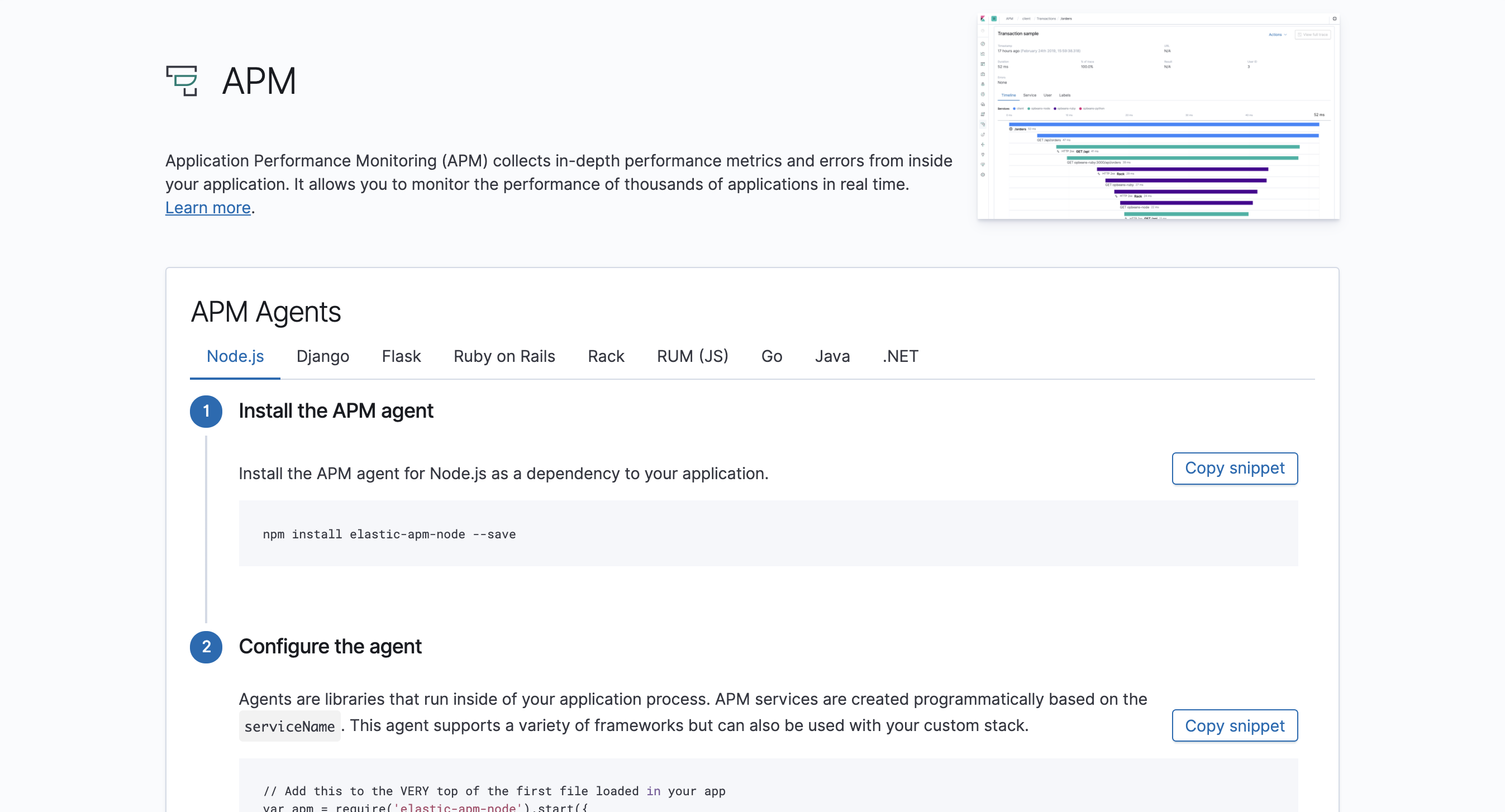IMPORTANT: No additional bug fixes or documentation updates
will be released for this version. For the latest information, see the
current release documentation.
Set up the APM app
edit
IMPORTANT: This documentation is no longer updated. Refer to Elastic's version policy and the latest documentation.
Set up the APM app
editAPM is available via the navigation sidebar in Kibana. If you have not already installed and configured Elastic APM, the Setup Instructions in Kibana will get you started.

Load the index pattern
editIndex patterns tell Kibana which Elasticsearch indices you want to explore. An APM index pattern is necessary for certain features in the APM app, like the query bar. To set up the correct index pattern, simply click Load Kibana objects at the bottom of the Setup Instructions.

To use a custom index pattern, adjust Kibana’s settings or use the Kibana API.
Next steps
editNo further configuration in the APM app is required. Install an APM Agent library in your service to begin visualizing and analyzing your data!